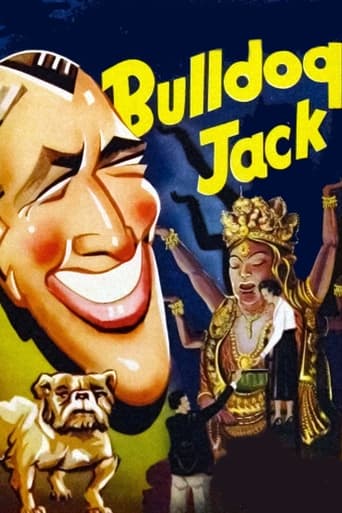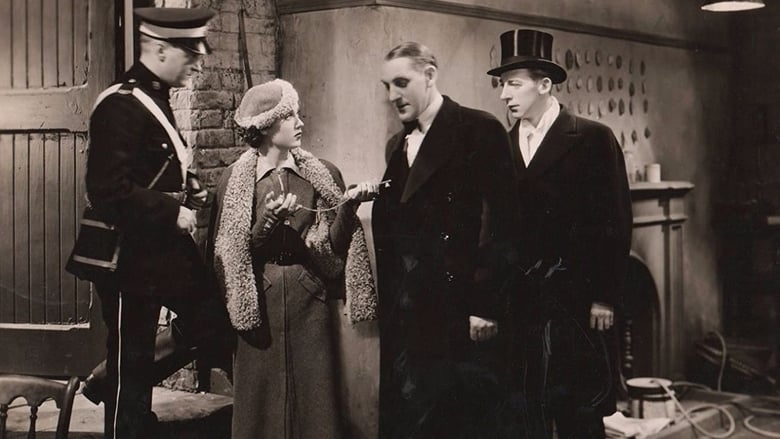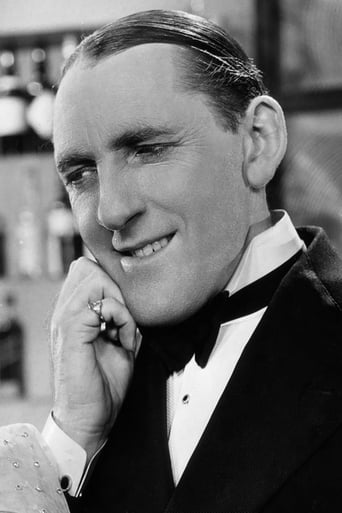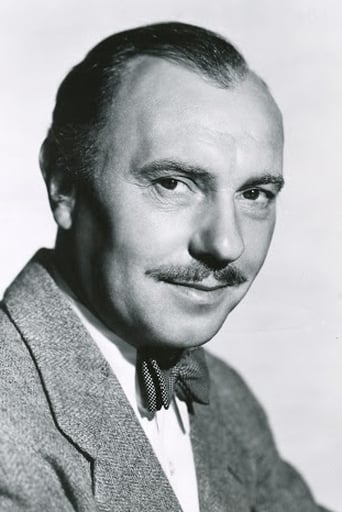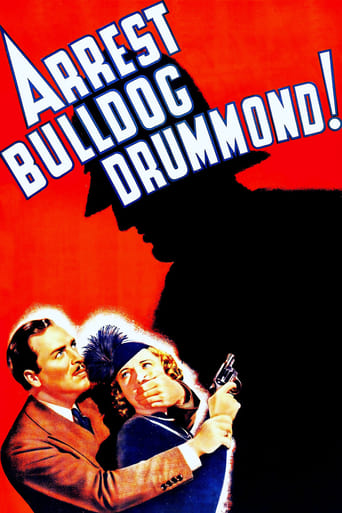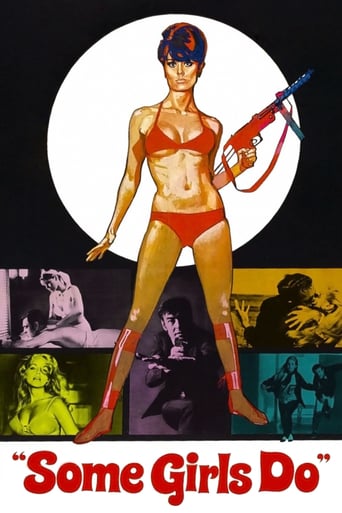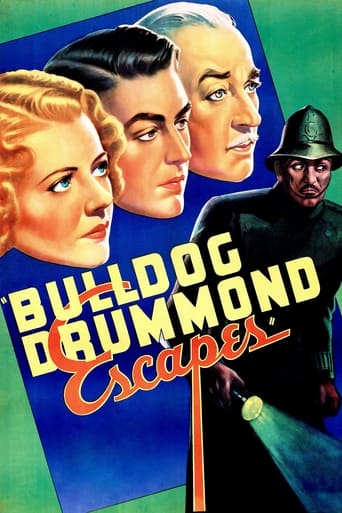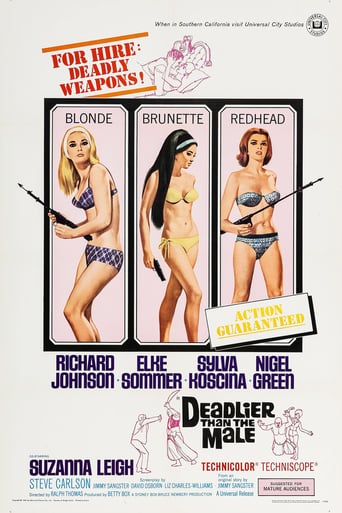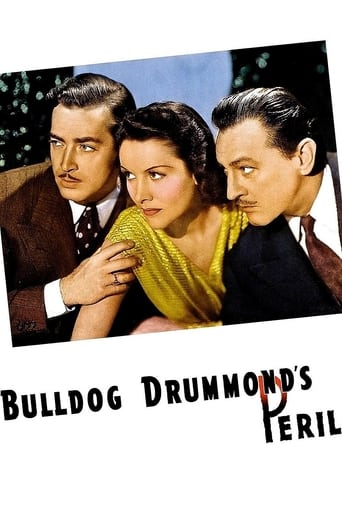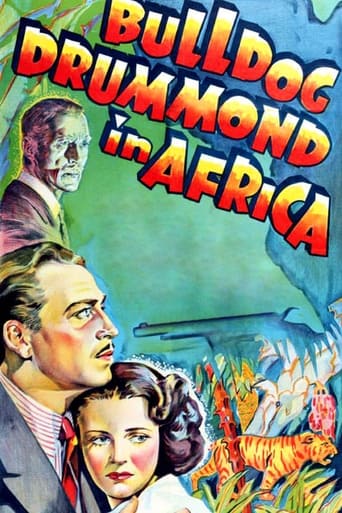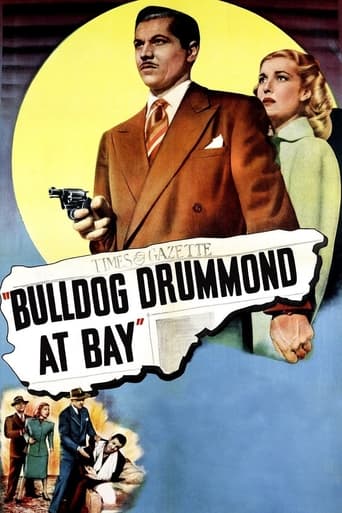Bulldog Jack (1935)
While filling in for injured supersleuth Bulldog Drummond (Atholl Fleming), world-class cricket player Jack Pennington (Jack Hulbert) attempts to foil a criminal mastermind's (Ralph Richardson) impending heist that's targeting a valuable jewel necklace held within the British Museum. This comedic 1930s mystery features daring rescues, intense fistfights and an exciting edge-of-your seat finale aboard a runaway train.
Watch Trailer
Free Trial Channels
Cast


Similar titles
Reviews
hyped garbage
The performances transcend the film's tropes, grounding it in characters that feel more complete than this subgenre often produces.
It's the kind of movie you'll want to see a second time with someone who hasn't seen it yet, to remember what it was like to watch it for the first time.
The movie really just wants to entertain people.
Jack Hulbert plays a polo player named Jack Pennington who literally runs into Bulldog Drummond when Drummond's car is sabotaged to stop Drummond from helping the young woman (Fay Wray) back in London. Drummond's arm is broken in the crash and he asks Hulbert to take his place in order to get the information that will let him help the fair damsel.Hulbert of course refuses to give up the ruse and soon with the aid of Algy he's trying to rescue the kidnapped girl and best the villainous Morelle (Ralph Richardson).Moving like the wind this is a damn fine little comedy mystery. Hulbert is absolutely hysterical as the Drummond wannabe as he blusters his way in and out of danger. His insanity is absolutely charming.(He would repeat the same sort of nonsense to much the same effect three or so years later in Kate Plus Ten an adaptation of an Edgar Wallace story thats gotten better with each viewing. Fay Wray has never looked more stunning. I'm so used to her in American films which seem now never managed to show her beauty the way that this film does. As Morelle Ralph Richardson is a truly demented evil genius. Its clear he's dangerous, however he's so genuinely smooth that you almost by that he could be a nice guy.The action is first rate with the climatic underground train sequence rightly held out as a key reason to see the film. One can easily imagine that the final twists and turns had audience members seeing this on a big screen shrieking.This is a really good film and one wonders why its not currently out on DVD or, apparently, available for TV broadcast in the United States, since its easily one of the better mysteries of this sort.Yes you really do want to check this film out.(I don't know if I'd consider it a Bulldog Drummond film, partly because its so humorous, partly because Drummond isn't really in it and partly because its kind of atypical for the films that are real Drummond films. It is but its not. CAn we call it a semi-Drummond film?)
This film, released in the USA as 'Alias Bulldog Drummond', was the seventh Bulldog Drummond film. It was made a few months after 'The Return of Bulldog Drummond', the highly political Mosleyite Drummond film in which Ralph Richardson played Drummond for the only time. In this film, Richardson plays the villain, Morel (or Morelle). Drummond himself is briefly played in this film by Atholl Fleming, who was not very well known and only appeared in eleven films in his entire career. Drummond is injured and confined to hospital near the beginning of this film and asks another man to take his place at a meeting with a mysterious woman and report back to him, and authorises him to impersonate him and pretend to be Drummond himself. This bizarre idea was cooked up by actor Jack Hulbert, who wrote the story, as a vehicle for himself. Hulbert was a popular comedian and tap dancer in British films of the 1930s and as unlikely a man to be in a Bulldog Drummond film as can be imagined, or could be imagined then, for that matter. Hulbert was a strange-looking man with a hatchet face and an enormous pointed chin, rather like Mr. Punch. Despite these unfortunate looks, he dressed, behaved and acted like an irresistible Romeo in many films, including this one. Hulbert cast his younger brother Claude Hulbert in this film as Drummond's sidekick Algy Longworth, and that was very successful, as Claude Hulbert had no difficulty at all in acting like a twit. (Whether he was one I wouldn't know, but many were in those days.) All these men with slicked-down hair and top hats and effete manners grate on the nerves today, but it was ever so fashionable in the 1930s. Fay Wray plays the girl in distress in this film, an undemanding part which she had no trouble in mastering. The butler Tenny is played very boringly by Gibb McLaughlin in this film, where he is called 'Denny', which was a mistake, as all Drumondonians will know. The film was directed very adequately by Walter Forde. It is treated very much as a comedy thriller, with jolly music of a humorous intent laid on too thick, and people colliding on stairs, and that sort of thing. It must not be taken seriously as a Bulldog Drummond thriller, as that was not the intention at all. The chief interest of this film historically is that a lot of it was shot in the recently decommissioned (25 September 1933) Central Line underground station known variously as 'Museum' or 'British Museum', depending on the time one refers to. In the film, the stations' names are changed, so that Holborn becomes 'High Holborn' (the name of the road above), and Museum becomes 'Bloomsbury' (the area in which it lies). Museum Station lay and still lies between Tottenham Court Road Station and Holborn Station, and I have recently suggested to Mayor Boris Johnson its reopening in order to relieve the desperate overcrowding at Holborn Station, which has become intolerable and a danger to the public owing to the intensity of office development in that area and the thousands of extra people who use the station every day. This film made free use of the abandoned Museum Station, and one sees a great deal of it as it was two years after closing, when it was still in what is called in Britain 'pretty good nick', meaning 'pretty great shape' in American dialect. In the story, this abandoned station is linked to the nearby British Museum by a tunnel, through which villains gain access to priceless ancient treasures. The yarn is good, the film is not bad, one can have fun and stare incredulously at Jack Hulbert's chin, and imagine the 'lost underground station' being restored to its former glory.
Released in the U.S. as 'Alias Bulldog Drummond', Bulldog Jack is just about the only one of a long series of patriotic Jack Hulbert comedies to survive the test of time and still be entertaining without being somewhat alien today.The past is another country, so they say, and this piece of the past seems to have another London Underground system.The film is very ably directed by Walter Forde, the former silent comedian who directed Rome Express and three other Hulbert comedies. It has a witty script by J.O.C. Orton, Sidney Gilliat and Gerard Fairlie, worked humorously around the serious 'Sapper' characters created by H.C. McNeile.There is some gorgeous early film noir photography by Mutz Greenbaum on excellent sets of the British Museum and tunnels and an abandoned station on London's 'Central' Underground Line built at the Gaumont British studios at Shepherd's Bush (which just happened to be on the Central Line).They changed the names of stations in the film to fictitious ones (though, oddly, later expansion of the real Central Line adopted two of the station names from the film) but there was a genuine closed 'Museum' station (called Bloomsbury in the film) which I can remember seeing the abandoned platforms of while passing from Tottenham Court Road to Holborn on the Central Line back in the '60s. It's not visible now. I've looked.However, the idea for the film is said to have come from writer J.O.C. Orton noticing the abandoned Brompton Road station on the Piccadilly Line. Still, there are such a lot of abandoned stations in London that it could have been any one of them.The film is remarkable for an incredibly eccentric performance by Ralph Richardson in the role of the master criminal Morelle, and as being the first of a number of British films that American star Fay Wray appeared in without ever being asked to scream once. In this film she looks simply beautiful - as ever - in some very beautiful clothes not suited at all to adventures in elevator shafts and tunnels. But her clothes never seem to get dirty once which is how it should be.There is also amusingly able support from Jack Hulbert's brother Claude as bumbling upper-class twit Algy Longworth - a role he seemed born for with his cartoon mouth and flappy ears.In part we have to thank producer Michael Balcon for the film being so watchable today as he was the only British producer at the time inclined to apply high production values to comedies.But we must also thank German expatriate Alfred Junge, who had designed for British silent classic Piccadilly, and who would go on to work with Powell and Pressburger on The Canterbury Tale, Colonel Blimp and A Matter of Life and Death (US title: Stairway to Heaven).His stunning work is really only let down by the occasional use of models which are a little less than convincing but quite acceptable in the spirit of a very silly film which abandons reality fairly early on.It is perhaps best to see this film in its very crisp Super 8 version, which, at only one hour long, disposes of the tedious, unfunny and dated dialogue scenes at the beginning of the full feature to leap right into the action with an impressive and dangerous accident on The Devil's Bend.The somewhat aboriginal fight scene in the British Museum is beautifully crafted and well worth seeing, and I am still pondering over how many takes there must have been to get the boomerangs to perform precisely as well as they did.The film has a very exciting climax on the Central Line (which at the time hadn't extended quite as far west as the film takes it) but I shall not spoil the ending for you by saying any more than that.
This is a fairly typical 1930's British comedy thriller yarn, only with a slightly better cast and plot albeit managing on much the same meagre budget. This makes it only slightly more interesting than the usual "quota-quickie" of the time, unless you like and love the humour of the Hulbert brothers and ditto the entire Bulldog Drummond canon like me. To an Unbeliever there is only Fay Wray to appreciate, unless you're mesmerised over the size of Jack Hulbert's chin.To the fan though there is much pithy humour to be had, admittedly sometimes a bit slapstick and even awkward, but generally there's a credible and amusing banter going off between Jack and Claude throughout the film. Claude's best work came later with his collaborations with Will Hay, especially in My Learned Friend, but Jack's film work was simply to fund his stage work - he never made any classics. I suppose that was also the reason Ralph Richardson starred here as a manic baddie. Jack always looked a little lost without his wife Cicely Courtneidge by his side too - utterly faithful to her, in this he didn't even (and looked like he didn't want to) Kiss The Girl!The climax resolves itself into a chase involving the British Museum and the London Underground, and is generally handled pretty well - although watch out for Jack jumping through the Tube train window!

